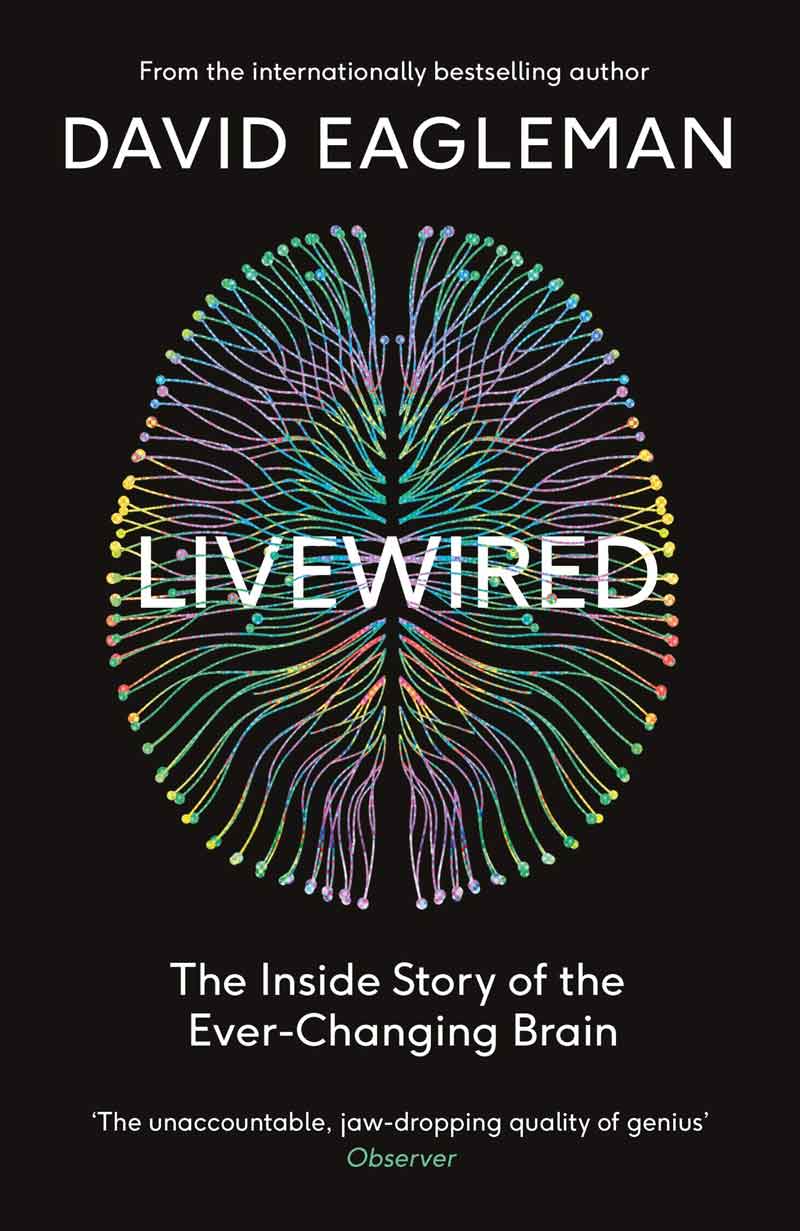Book: Livewired: The Inside Story of the Ever-Changing Brain
Author: David Eagleman
Publisher: Canongate
Price: Rs 499
Matthew’s parents faced a heart-rending dilemma — whether to let their six-year-old boy struggle with crippling, intractable and dangerous seizures, which, at times, occurred several times a day or let surgeons remove one half of Matthew’s brain through a very rare procedure called hemispherectomy. The doctors expected the hemispherectomy to stop the seizures. The parents opted for the surgery that would leave their boy with only half a brain.
Matthew’s story is only one example of the myriad hooks, the internal cliffhangers, and the riveting questions that the American neuroscientist-author, David Eagleman, has employed in Livewired to offer kaleidoscopic, entertaining and multi-directional insights into what he calls “the most gorgeous phenomenon in biology.” The book is a tour de force that reflects Eagleman’s fine storytelling skills to explain the complexities and the promises of the phenomenon called neural plasticity, the capacity of the human brain to rewire itself incessantly.
The human brain has roughly 86 billion neurons and the plasticity is rooted in the estimated more than 200 trillion connections among those neurons. Throughout our lives, that wiring keeps changing as the brain processes new information. Eagleman connects this field of fundamental neuroscience with everyday life through such lines: “When you learn something — the location of a restaurant you like, a piece of gossip about your boss, that addictive new song on the radio — your brain physically changes.”
Many books on the brain aimed at non-technical readers have emerged in the two decades since the Indian-American neuroscientist, V.S. Ramachandran, published Phantoms in the Brain in 1998. They represent a trend among researchers seeking to broaden public understanding of the brain’s architecture, consciousness, emotions and reason, hallucinations, among other aspects of brain science. The American psychiatrist, Jeffrey Schwartz, and the science writer, Sharon Begley, had co-authored in 2002 The Mind and the Brain, a compelling narrative on neural plasticity. A Columbia University psychiatrist, Norman Doidge, published in 2007 The Brain That Changes Itself, connecting neural plasticity to memory, sexual attraction, compulsive behaviour and stroke rehabilitation.

Livewired: The Inside Story of the Ever-Changing Brain By David Eagleman, Canongate, Rs 499 Amazon
Livewired is in line with these efforts. Eagleman — he teaches at Stanford University and has authored books on the brain — helps readers deep dive into neural plasticity through illuminating questions he goes on to answer. Why is one of the world’s best archers armless? Why have so many blind people — Andrea Bocelli, Ray Charles, Stevie Wonder, among others — displayed extreme talent in music? Why did Albert Einstein utter his final words in German?
Relying on metaphors such as “competition” and “real estate,” Eagleman uses Livewired to propose a hypothesis that explains dreams as the “strange love child of neural plasticity and the rotation of the planet”. Multiple lab studies and observations in humans have established that even short-term sensory deprivation to areas of the brain triggers neighbouring territories to take over those areas. Experiments have shown that such takeover activity can start within hours. During night-time, a consequence of the planet’s rotation, when people sleep, the visual cortex — the region of the brain that processes signals from the eyes — faces the risk of being taken over by neighbouring brain areas linked to other senses. Amid this competition for neural real-estate, Eagleman argues, dreams amplify the visual system’s activity periodically throughout the night, preventing the takeover.
Eagleman is a neuroscientist, a story-teller, and a technology entrepreneur. Livewired reveals all three traits. He’s the co-founder of Neosensory, a company trying to develop non-invasive brain-machine interfaces to create new senses. At several points in the book, Eagleman refers to Neosensory’s efforts — for instance, its work on a device for the deaf that captures sounds around a person and maps it on to the vibratory motors on the skin, allowing the deaf to hear the sounds around them. The references to Neosensory’s activities are neither out of place nor too frequent but the book could have done without them. For an otherwise flawless book that seeks to popularize a complex science subject, that might be the only blemish.











